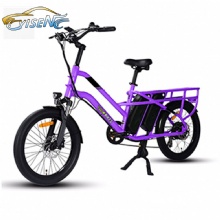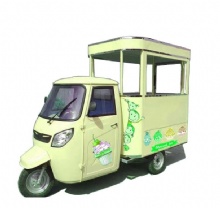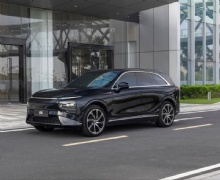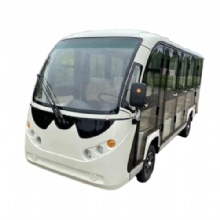Author:AliceDate:2025-10-30

How to Match the Right Motor and Electronic Control System to Golf Carts Based on Terrain?
[October 30, 2025 Industry News] With the global popularity of golf and the widespread application of multi-functional golf carts in scenic areas and resorts, the performance adaptability of golf carts has gradually become a focus of industry attention. Among these factors, the impact of terrain conditions on motor selection and electronic control system configuration is becoming a core factor determining the cart's range, safety, and user experience. Recently, industry technical experts, in conjunction with several leading companies, released the "Golf Cart Power System Terrain Adaptation Guide," providing the market with a clear framework for technology selection.
Mountain Courses: High-Torque Motors and Intelligent Speed Regulation Become Essentials
For mountain golf courses with steep slopes and continuous curves, the stability of power output and climbing ability are primary considerations. "Mountain terrain requires motor torque that is at least 30% higher than on flat ground," said Li Ming, a golf cart power system engineer, in an interview. He explained that permanent magnet synchronous motors should be prioritized in such scenarios, with peak torque exceeding 150 N·m, easily handling slopes up to 25°. Meanwhile, the electronic control system needs to be equipped with a "slope-sensing intelligent speed regulation function," which uses sensors to monitor the terrain slope in real time and automatically adjusts the output power to avoid the risk of motor overload or rollback when starting on steep slopes.

A recent golf cart upgrade project completed by a mountain golf club in Zhejiang is a typical example. The club's previous series-wound motor golf carts frequently experienced problems such as insufficient climbing power and rapid battery degradation. After upgrading to a permanent magnet synchronous motor + vector control system, the time taken to climb slopes was reduced by 40%, the range per charge increased from 80 kilometers to 120 kilometers, and the motor failure rate decreased by 65%.
Plain Courses: High-Efficiency Energy-Saving Motors and Precise Control are Paramount
Compared to mountainous terrain, plain golf courses have gentler terrain, requiring lower motor torque, but placing greater emphasis on energy efficiency and smooth handling. Industry data shows that in plain scenarios, AC asynchronous motors have become the mainstream choice due to their high energy conversion efficiency (up to 90% or more), and their lightweight design can also reduce overall vehicle energy consumption and extend battery life.
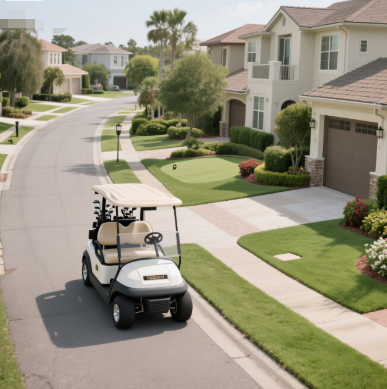
In terms of electronic control systems, plain courses emphasize "precise low-speed control." For example, when a golf cart is traveling around the green, the electronic control system needs to maintain a stable speed below 5 km/h, while simultaneously achieving linear acceleration and deceleration to avoid sudden stops and starts that could damage the turf. A certain brand's "turf protection mode," using a fuzzy control algorithm, achieves speed adjustment accuracy of ±0.2 km/h and has been adopted by over 200 plains golf courses nationwide.
Sand/Wetland Scenarios: A Two-Pronged Approach of Protective Design and Power Adjustment Some golf courses include sandy hazards or wetland landscapes. These scenarios place special demands on the protective performance of motors and electronic control systems. Technical guidelines explicitly recommend that golf cart motors in such environments meet IP67 waterproof and dustproof standards, and the electronic control system should be equipped with a "mud and sand protective coating" and a "humidity sensing and warning function" to prevent sand and moisture intrusion that could cause short circuits.
Furthermore, the high resistance characteristics of sandy surfaces require the motor to have "instantaneous power compensation" capabilities. When the sensor detects wheel slippage, the electronic control system needs to increase the motor's output torque within 0.1 seconds while simultaneously adjusting the wheel drive force distribution to ensure driving stability. After adopting this technology, a coastal golf course in Hainan saw its golf cart success rate on sandy terrain increase from 75% to 98%, with no further incidents of carts getting stuck due to wheel slippage.
Industry Trends: Intelligentization and Customization Become Development Directions
With the penetration of IoT technology, golf cart power systems are developing towards "terrain adaptation." The new generation of golf carts has begun to be equipped with multi-sensor fusion systems, using GPS positioning, gyroscopes, and pressure sensors to collect terrain data in real time and automatically match the optimal motor operating parameters and electronic control strategies. "In the future, golf carts will achieve 'multi-functionality,' capable of efficient climbing in mountains and energy-efficient cruising on plains, without the need for manual mode switching," predicts industry analyst Wang Lei. He anticipates that by 2027, intelligent golf carts with terrain adaptation capabilities will account for over 60% of the market.

For golf course operators, the release of the "Guidelines" provides a clear basis for equipment procurement. Experts recommend that when choosing a golf cart, a detailed survey of the terrain should be conducted first to determine key parameters such as the proportion of steep slopes, road resistance, and areas prone to water accumulation. Then, the motor power and electronic control functions should be customized based on the frequency of use and range requirements to avoid wasting resources by using a "large horse for a small cart" or "small horse for a large cart".
↓Next [ The annual Canton Fair is grandly held. Our companys booth is in the Golf Cart Outdoor Pavilion. We look forward to your visit. ]
